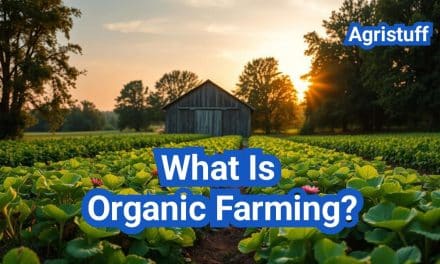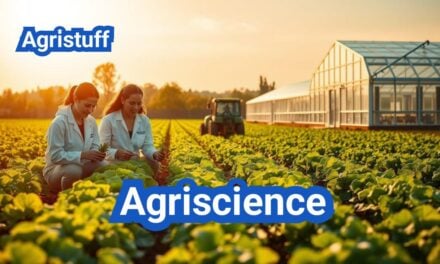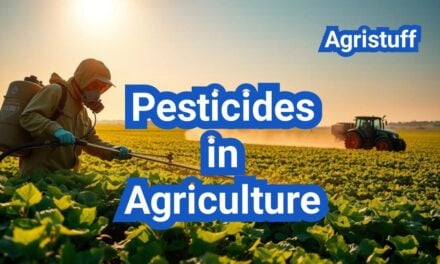Farming is a diverse and ever-evolving industry that encompasses a wide range of practices and techniques. From traditional methods to modern innovations, the various categories of farming play a crucial role in meeting the world’s food demands.
The world of agriculture is divided into different segments ( Types Of Farming ) based on output, including agriculture, arboriculture, and livestock agriculture. Modern farming practices have evolved to include cutting-edge techniques like greenhouse farming and precision agriculture, which emphasize agricultural sustainability.
Key Takeaways
- Diverse farming practices cater to different needs and environments.
- Modern farming techniques include greenhouse and precision agriculture.
- Agricultural sustainability is crucial for the future of farming.
- Farming categories are based on output, including agriculture and livestock.
- The evolution of farming practices is driven by technology and innovation.
Understanding the Fundamentals of Farming
Modern farming is a complex and multifaceted industry that has evolved substantially, incorporating innovative techniques and sustainable practices. At its core, farming involves the cultivation of crops and the raising of livestock to produce food, fiber, and other products essential for human survival and economic development.
The way farming is practiced today is vastly different from the traditional methods used by our ancestors. Modern farming practices have been shaped by technological advancements, environmental concerns, and the need to increase efficiency and productivity.
What Defines Farming in Modern Context | Types Of Farming
In the modern context, farming is defined by its use of advanced technology, sustainable practices, and a focus on producing high-quality products while minimizing environmental impact. Techniques such as precision agriculture, which involves the use of GPS and data analytics to optimize crop yields and reduce waste, are becoming increasingly common.
The integration of technology in farming has led to improved crop management, reduced labor costs, and enhanced decision-making capabilities for farmers. Modern farming also places a significant emphasis on sustainability, with practices aimed at conserving natural resources, reducing chemical use, and promoting biodiversity.
| Aspect | Traditional Farming | Modern Farming |
|---|---|---|
| Technology Use | Limited mechanization | Advanced machinery, precision agriculture |
| Sustainability Focus | Minimal environmental consideration | Strong emphasis on sustainability and environmental stewardship |
| Crop Management | Conventional methods, often labor-intensive | Data-driven decision making, optimized inputs |
The Evolution of Agricultural Practices | Types Of Farming
Agricultural practices have undergone significant evolution over the centuries, driven by the need to feed a growing global population, adapt to climate change, and incorporate new technologies. The shift from traditional farming methods to more modern and sustainable practices has been gradual but transformative.
The evolution of farming has seen the introduction of new farming techniques, such as hydroponics, vertical farming, and regenerative agriculture, which aim to improve efficiency, reduce environmental impact, and promote ecological balance.
As the global population continues to grow, the agricultural sector must continue to innovate and adapt, embracing agricultural innovations that support sustainable development and food security.
Major Types of Farming Classifications
Farming practices around the world can be broadly categorized into several types based on scale, methods, and inputs. Understanding these classifications is crucial for analyzing the strengths and weaknesses of different agricultural practices.
Based on Scale: Subsistence vs. Commercial | Types Of Farming
Farming can be categorized into subsistence farming and commercial farming based on the scale of operation. Subsistence farming is practiced to meet the food needs of the farmer’s family, with little or no surplus for sale. In contrast, commercial farming is done on a larger scale with the primary goal of selling the produce for profit.
Subsistence farming is often characterized by small land holdings and traditional farming practices. It is prevalent in regions where farmers have limited access to resources and markets. On the other hand, commercial farming is more mechanized and relies on modern agricultural techniques to maximize yield and efficiency.
Based on Methods: Traditional vs. Modern | Types Of Farming
The method of farming is another critical factor in classifying farming types. Traditional farming methods rely on age-old practices passed down through generations, often involving manual labor and simple tools. In contrast, modern farming techniques incorporate advanced technology, machinery, and scientific knowledge to improve productivity.
Modern farming has revolutionized agriculture by increasing yield, reducing labor costs, and improving crop quality. However, traditional farming methods are still valued for their sustainability and environmental benefits.
Based on Inputs: Intensive vs. Extensive | Types Of Farming
Farming can also be classified based on the intensity of inputs used. Intensive farming involves using high levels of inputs such as fertilizers, pesticides, and irrigation to maximize output per unit of land. This approach is often used in regions with limited land availability.
In contrast, extensive farming involves using large areas of land with relatively lower levels of inputs. This type of farming is more common in regions where land is abundant, and the focus is on producing large quantities rather than maximizing yield per acre.
Both intensive and extensive farming have their advantages and challenges. Intensive farming can lead to higher yields but may also result in environmental degradation if not managed sustainably. Extensive farming, while potentially more environmentally friendly, may require larger areas of land and can be less efficient in terms of yield per acre.
Subsistence Farming Systems

Subsistence farming, characterized by its reliance on natural resources and manual labor, is a traditional practice in many parts of the world. This type of farming is primarily practiced by smallholder farmers in underdeveloped countries, where it serves as a vital source of food and income.
Shifting Cultivation | Types Of Farming
Shifting cultivation is a traditional farming practice where land is cleared, cultivated for a few years, and then abandoned to allow the land to regenerate. This method is commonly practiced in tropical regions.
Key characteristics of shifting cultivation include:
- Land preparation through burning or clearing
- Cultivation of crops for a limited period
- Shifting to new land after soil fertility declines
Nomadic Herding | Types Of Farming
Nomadic herding involves the movement of livestock from one place to another in search of grazing land and water. This practice is prevalent in arid and semi-arid regions.
The main features of nomadic herding are:
- Mobility to find grazing and water
- Reliance on livestock for livelihood
- Traditional knowledge of grazing patterns
Intensive Subsistence Farming | Types Of Farming
Intensive subsistence farming involves the intensive use of land for farming, often using manual labor and natural fertilizers to maximize yield.
| Farming Practice | Characteristics | Regions |
|---|---|---|
| Shifting Cultivation | Land clearing, limited cultivation period, shifting to new land | Tropical regions |
| Nomadic Herding | Mobility, reliance on livestock, traditional grazing knowledge | Arid and semi-arid regions |
| Intensive Subsistence Farming | Intensive land use, manual labor, natural fertilizers | Various regions with dense population |
These subsistence farming systems are crucial for the livelihoods of millions of people worldwide. Understanding their practices and significance is essential for supporting smallholder farmers and promoting sustainable agriculture.
Commercial Farming Types and Practices
The world of commercial farming encompasses a diverse range of practices, from plantation farming to livestock ranching. These farming types are crucial in meeting the global demand for food and other agricultural products.
Commercial farming practices are characterized by their scale and use of technology to improve efficiency and productivity. Among the various types of commercial farming, some stand out due to their prevalence and economic impact.
Plantation Farming | Types Of Farming
Plantation farming involves the large-scale cultivation of a single crop, such as coffee, tea, or rubber. This type of farming is often practiced in tropical regions where the climate is suitable for these crops.
Plantation farming is known for its economies of scale and use of mechanization, which helps in reducing labor costs and increasing productivity. However, it also faces challenges related to environmental sustainability and labor practices.
Mixed Farming | Types Of Farming
Mixed farming combines the cultivation of crops with the raising of livestock. This approach allows farmers to diversify their income streams and make efficient use of resources.
Mixed farming is beneficial for maintaining soil fertility through crop rotation and reducing the risk associated with relying on a single crop or livestock. It is a resilient farming practice that can adapt to various environmental conditions.
Dairy Farming | Types Of Farming
Dairy farming is a specialized type of commercial farming focused on milk production. It involves the management of dairy cattle and the production of milk and other dairy products.
Dairy farming requires significant investment in infrastructure, including milking equipment and storage facilities. Advances in breeding and nutrition have improved the productivity of dairy farms.
Livestock Ranching | Types Of Farming
Livestock ranching involves the grazing of animals such as cattle, sheep, and goats over large areas. This practice is common in regions with extensive grazing lands.
Livestock ranching is often associated with extensive farming systems, where animals are raised on pasture. The success of livestock ranching depends on factors like grazing management and animal health.
Specialized Crop Farming Methods

With the increasing demand for food security, specialized crop farming methods have emerged as a crucial component of modern agriculture. These methods are designed to optimize crop yields, improve resource allocation, and reduce environmental impact.
Specialized crop farming encompasses various techniques tailored to specific crops, including grains, vegetables, fruits, and cash crops. The significance of these methods lies in their ability to enhance productivity while promoting sustainable agricultural practices.
Grain and Cereal Farming | Types Of Farming
Grain and cereal farming is a fundamental aspect of global food production. This type of farming involves the cultivation of crops such as wheat, rice, and corn, which are staples in many diets around the world.
The techniques used in grain and cereal farming include:
- Precision planting: Utilizing technology to optimize seed placement and spacing.
- Crop rotation: Rotating crops to maintain soil health and reduce pest and disease pressure.
- Irrigation management: Efficiently managing water resources to support crop growth.
Vegetable and Fruit Cultivation | Types Of Farming
Vegetable and fruit cultivation is another critical component of specialized crop farming. These crops are grown using a variety of methods, including:
- Intensive farming: Using high-yielding varieties and advanced agricultural practices to maximize output.
- Organic farming: Avoiding synthetic fertilizers and pesticides to produce healthier crops.
- Hydroponics: Growing plants in nutrient-rich solutions rather than soil.
Cash Crop Production | Types Of Farming
Cash crop production involves growing crops for sale rather than for personal consumption. Common cash crops include cotton, tobacco, and coffee.
The benefits of cash crop production include:
- Economic benefits: Providing income for farmers and contributing to local economies.
- Diversification: Allowing farmers to diversify their crops and reduce dependence on a single crop.
- Market opportunities: Creating opportunities for farmers to participate in global markets.
In conclusion, specialized crop farming methods play a vital role in modern agriculture, enhancing productivity, and promoting sustainability. By understanding and adopting these methods, farmers can improve their yields and contribute to global food security.
Organic Farming Approaches
The principles of organic agriculture are centered around the use of natural processes and materials to maintain soil fertility and control pests. Organic farming prohibits the use of genetically engineered seeds and synthetic fertilizers, promoting instead the use of natural fertilizers and biodiversity.
Principles of Organic Agriculture | Types Of Farming
Organic agriculture is guided by several key principles that prioritize environmental sustainability and social responsibility. These include maintaining soil health through natural means, conserving water, and promoting biodiversity. Organic farming systems also emphasize the importance of animal welfare and the use of locally adapted crop and animal varieties.
Key principles include:
- Using natural materials and processes to maintain soil fertility
- Conserving water and reducing pollution
- Promoting biodiversity and ecological balance
- Ensuring animal welfare and using locally adapted varieties
4 Types of Organic Farming Certification | Types Of Farming
Organic farming certification is crucial for ensuring compliance with organic standards. There are several types of certification programs available, each with its own set of requirements and standards.
Some of the main certification types include:
- USDA Organic: The United States Department of Agriculture’s organic certification program
- EU Organic: The European Union’s organic farming certification
- Canada Organic: Canada’s organic certification program
- Japan Organic: Japan’s organic farming certification standards
Transitioning to Organic Methods | Types Of Farming
Transitioning to organic farming methods requires careful planning and management. Farmers must adhere to organic principles and practices for a specified period before their products can be certified as organic.
Steps to transition include:
- Developing an organic farming plan
- Avoiding the use of synthetic fertilizers and pesticides
- Implementing crop rotation and soil conservation practices
- Maintaining detailed records of farming practices
Sustainable Agriculture Practices

Sustainable agriculture encompasses a range of practices designed to conserve natural resources and promote ecological balance. These practices are crucial for ensuring the long-term health and productivity of agricultural systems.
Conservation Tillage Types | Types Of Farming
Conservation tillage involves minimizing the disturbance of soil by reducing the frequency or intensity of tillage. This approach helps in reducing soil erosion, improving soil health, and conserving water. There are several types of conservation tillage, including no-till, strip-till, and reduced-till farming.
No-till farming eliminates tillage altogether, while strip-till farming involves tilling narrow strips where crops are planted. Reduced-till farming minimizes the area tilled or reduces the depth of tillage.
Crop Rotation and Diversification | Types Of Farming
Crop rotation and diversification are key strategies in sustainable agriculture. Rotating crops helps in maintaining soil fertility, reducing pest and disease pressure, and improving crop yields. Diversification involves growing a variety of crops, which can enhance ecosystem services and improve farm resilience.
- Crop rotation can help break disease and pest cycles.
- Diversifying crops can improve soil health and structure.
- It can also enhance biodiversity on the farm.
Integrated Pest Management | Types Of Farming
Integrated Pest Management (IPM) is a holistic approach that involves using a combination of techniques to manage pests and diseases. IPM strategies include cultural, biological, and chemical controls, aiming to minimize the use of chemical pesticides and maintain ecosystem balance.
Effective IPM requires monitoring pest populations, understanding the life cycles of pests, and using a range of control methods. This approach not only reduces the environmental impact of farming but also helps in reducing costs associated with pest management.
Regenerative Agriculture Systems

By improving soil health, sequestering carbon, and enhancing biodiversity, regenerative agriculture provides a holistic approach to farming.
Regenerative farming focuses on regenerating the health of the soil, improving the ecosystem, and enhancing biodiversity. This approach to farming not only improves the environmental sustainability of agricultural practices but also contributes to mitigating climate change.
Soil Health Management | Types Of Farming
Soil health is the foundation of regenerative agriculture. Practices such as no-till or reduced-till farming, cover cropping, and incorporating organic amendments help improve soil structure, increase organic matter, and promote soil biota.
Effective soil health management involves:
- Monitoring soil health indicators
- Implementing conservation tillage
- Using cover crops and crop rotations
- Incorporating organic amendments
| Practice | Benefits |
|---|---|
| No-till or reduced-till farming | Reduces soil erosion, improves soil structure |
| Cover cropping | Enhances soil health, reduces erosion, promotes biodiversity |
| Organic amendments | Improves soil fertility, structure, and overall health |
Carbon Sequestration Techniques | Types Of Farming
Regenerative agriculture plays a crucial role in mitigating climate change through carbon sequestration. Techniques such as agroforestry, perennial agriculture, and improved grazing management help capture and store carbon dioxide from the atmosphere.
Some effective carbon sequestration techniques include:
- Agroforestry practices
- Perennial agriculture
- Improved grazing management
Biodiversity Enhancement | Types Of Farming
Enhancing biodiversity is a key component of regenerative agriculture. By promoting ecological balance, farmers can reduce the need for external inputs such as pesticides and fertilizers.
Strategies for biodiversity enhancement include:
- Planting diverse crop rotations
- Incorporating native vegetation
- Creating habitat for beneficial organisms
In conclusion, regenerative agriculture systems offer a promising approach to sustainable farming by focusing on soil health management, carbon sequestration, and biodiversity enhancement. By adopting these practices, farmers can contribute to a more sustainable food system and help mitigate the impacts of climate change.
Modern Innovative Farming Techniques

Innovative farming methods are revolutionizing the way we produce food, making it more efficient and environmentally friendly. These modern techniques are designed to address the challenges posed by climate change, population growth, and the need for sustainable agriculture.
Hydroponics and Aquaponics | Types Of Farming
Hydroponics and aquaponics are soilless cultivation methods that offer significant advantages over traditional farming. Hydroponics involves growing plants in a nutrient-rich solution rather than soil, while aquaponics combines hydroponics with fish farming, creating a symbiotic system where plants and fish benefit from each other.
Benefits of Hydroponics and Aquaponics:
- Increased crop yields
- Water conservation
- Reduced land use
- Improved crop quality
Vertical and Urban Farming | Types Of Farming
Vertical farming involves growing crops in vertically stacked layers, often in indoor environments. Urban farming refers to the practice of growing food in urban areas, utilizing spaces such as rooftops, balconies, and abandoned lots. These methods help reduce transportation costs and increase food security in urban areas.
Key Features of Vertical and Urban Farming:
| Feature | Description |
|---|---|
| Space Efficiency | Maximizes use of limited space |
| Year-Round Production | Allows for continuous production regardless of season |
| Reduced Transportation | Decreases the distance between farm and consumer |
Aeroponics and Container Farming | Types Of Farming
Aeroponics is a method where roots are suspended in the air and misted with a nutrient-rich solution. Container farming involves growing crops in containers, which can be placed in a variety of locations, including urban areas. Both methods offer flexibility and can be highly productive.
Aeroponics Advantages:
- High water efficiency
- Increased oxygenation of roots
- Potential for high yields
By embracing these modern innovative farming techniques, we can significantly improve food production while minimizing environmental impact. As the global population continues to grow, adopting such methods will be crucial for ensuring food security and sustainability.
Smart Farming and Precision Agriculture

With the advent of smart farming and precision agriculture, the agricultural sector is witnessing a significant shift towards efficiency and sustainability. These modern farming practices leverage advanced technologies to optimize crop yields, reduce waste, and promote environmental stewardship.
IoT and Sensor Technology | Types Of Farming
The Internet of Things (IoT) and sensor technology play a crucial role in smart farming. IoT devices and sensors monitor various parameters such as soil moisture, temperature, and crop health, enabling farmers to make data-driven decisions.
- Soil moisture sensors help in precise irrigation management.
- Temperature sensors monitor weather conditions, aiding in crop protection.
- Crop health sensors detect early signs of disease or pest infestations.
Drone and Satellite Monitoring | Types Of Farming
Drones and satellites are increasingly being used for monitoring crop health and growth. Drones equipped with multispectral cameras can capture detailed images of fields, helping farmers identify issues that are not visible to the naked eye.
- Drones provide high-resolution imagery for crop monitoring.
- Satellites offer broader coverage, enabling large-scale farm monitoring.
- Data from drones and satellites are used to create detailed farm maps.
AI and Machine Learning Applications | Types Of Farming
Artificial Intelligence (AI) and Machine Learning (ML) are being applied to analyze data collected from various sources, including IoT devices, drones, and satellites. AI algorithms can predict crop yields, detect anomalies, and provide insights that help in decision-making.
- AI-powered predictive analytics help in forecasting crop yields.
- ML models identify patterns in data, aiding in pest and disease management.
- AI-driven decision support systems provide recommendations for optimal farming practices.
By integrating these technologies, smart farming and precision agriculture are set to revolutionize the agricultural sector, making it more efficient, productive, and sustainable.
Types of Farming Machinery and Equipment

The development and utilization of farming equipment have transformed agricultural practices, enabling farmers to cultivate and harvest crops more efficiently.
Tractors and Their Classifications | Types Of Farming
Tractors are a fundamental piece of equipment in modern farming, serving as the backbone for various agricultural tasks. They are classified based on their power output, with smaller tractors suitable for small-scale farming and larger, more powerful tractors used in extensive commercial farming operations.
Tractor classifications include utility tractors, row crop tractors, and track tractors, each designed for specific tasks and terrains. Utility tractors are versatile and used for a variety of tasks, while row crop tractors are designed for navigating between crop rows. Track tractors, with their continuous tracks, offer improved traction and reduced soil compaction.
Planting and Harvesting Equipment | Types Of Farming
Planting and harvesting are critical stages in the farming cycle, and specialized farm equipment has been developed to improve efficiency and reduce labor costs. Planting equipment includes seed drills and planters, which ensure accurate seed placement and spacing.
Harvesting equipment varies depending on the crop, with combines being used for grain crops like wheat and corn. For other crops, specialized harvesters such as potato harvesters and cotton pickers are employed. These machines significantly reduce the manual labor required and enable farmers to harvest crops over large areas quickly.
Irrigation and Fertilization Systems | Types Of Farming
Irrigation systems are crucial for crop growth, especially in areas with inadequate rainfall. Modern irrigation systems include drip irrigation, sprinkler irrigation, and center pivot irrigation, each with its advantages and suited to different types of crops and terrains.
Fertilization systems are also vital for maintaining soil fertility and promoting healthy crop growth. These systems can be integrated with irrigation systems, allowing for the precise application of fertilizers. Precision agriculture techniques, including the use of GPS and sensors, further enhance the efficiency of fertilization and irrigation practices.
Conventional Farming: Advantages and Challenges

With its long history and widespread adoption, conventional farming presents both opportunities and challenges. As a dominant force in global agriculture, it is essential to understand its economic benefits, productivity considerations, and environmental impact concerns.
Economic Benefits of Scale | Types Of Farming
Conventional farming offers several economic advantages, primarily due to its large-scale operations. By producing crops and livestock on a massive scale, farmers can benefit from economies of scale, reducing costs per unit and increasing profitability. This approach also facilitates the use of mechanized equipment, further enhancing efficiency.
The economic benefits of conventional farming are evident in its ability to supply large quantities of food to meet global demands. According to the United States Department of Agriculture (USDA), conventional farming accounts for a significant portion of the country’s agricultural output.
| Economic Indicator | Conventional Farming | Organic Farming |
|---|---|---|
| Production Cost per Unit | Lower | Higher |
| Yield per Acre | Higher | Lower |
| Market Share | Dominant | Niche |
Productivity and Yield Considerations | Types Of Farming
One of the primary advantages of conventional farming is its high productivity. By utilizing high-yielding crop varieties, fertilizers, and pesticides, farmers can significantly increase their yields. This is crucial for meeting the world’s growing food demands.
Productivity enhancements in conventional farming are often achieved through the use of advanced technologies and farming practices. For instance, precision agriculture techniques enable farmers to optimize inputs and reduce waste.
Environmental Impact Concerns | Types Of Farming
Despite its economic and productivity benefits, conventional farming poses significant environmental challenges. The intensive use of chemical fertilizers and pesticides can lead to soil degradation, water pollution, and loss of biodiversity.
Sustainable practices are essential to mitigate these environmental impacts. Techniques such as crop rotation, conservation tillage, and integrated pest management can help reduce the ecological footprint of conventional farming.
By adopting these practices, farmers can contribute to a more sustainable agricultural system while maintaining the productivity and economic viability of conventional farming.
Choosing the Best Type of Farming for Different Contexts

Understanding the best farming type for specific conditions is vital for farmers. The choice of farming method depends on various factors, including geography, climate, economic considerations, and sustainability goals.
Geographic and Climate Considerations | Types Of Farming
Geographic and climate factors play a crucial role in determining the most suitable farming type. For instance, areas with heavy rainfall may benefit from agroforestry practices, while arid regions may require drip irrigation systems.
- Topography: Slope and elevation can affect soil erosion and water retention.
- Climate: Temperature, rainfall, and sunlight exposure influence crop selection.
- Soil type: Different soils have varying levels of fertility and water-holding capacity.
Economic and Market Factors | Types Of Farming
Economic and market considerations are also critical in choosing a farming type. Farmers must consider the demand for specific crops, market prices, and production costs.
- Market demand: Understanding consumer preferences and trends.
- Production costs: Labor, equipment, and input costs affect profitability.
- Government policies: Subsidies, taxes, and regulations can influence farming decisions.
Sustainability and Long-term Planning | Types Of Farming
Sustainability and long-term planning are essential for ensuring the viability of farming operations. Practices like crop rotation and organic farming can enhance soil health and biodiversity.
- Soil conservation: Techniques like contour farming and terracing.
- Biodiversity: Maintaining ecological balance through diverse farming practices.
- Water management: Efficient irrigation systems and water harvesting.
By considering these factors and adopting a tailored approach, farmers can optimize their farming practices to achieve better yields, reduce environmental impact, and improve their economic viability.
The Future of Farming Systems | Types Of Farming
The future of farming is closely tied to the adoption of sustainable practices and innovative techniques. As the global population grows, ensuring food security while minimizing environmental impact is crucial. Various farming systems have evolved, from subsistence to commercial farming, each with unique characteristics and challenges.
Innovative farming techniques like precision agriculture and regenerative agriculture are being adopted to enhance efficiency and reduce environmental footprint. Continued investment in agricultural research and development is vital for the future of farming, enabling the sector to meet 21st-century challenges.
By embracing sustainable farming practices and cutting-edge technology, the agricultural sector can develop resilient farming systems. These systems must adapt to climate change, conserve natural resources, and promote biodiversity, ultimately ensuring food security and agricultural sustainability for future generations.
FAQ
What are the main types of farming classifications?
The main types of farming classifications include subsistence vs. commercial, traditional vs. modern, and intensive vs. extensive farming practices.
What is subsistence farming, and how does it differ from commercial farming?
Subsistence farming is a type of farming where the produce is primarily for the farmer’s family consumption, whereas commercial farming is focused on producing crops or livestock for sale in the market.
What are the benefits of organic farming?
Organic farming promotes soil health, biodiversity, and efficient water use, while reducing the environmental impact of farming by avoiding synthetic fertilizers and pesticides.
What is regenerative agriculture, and how does it contribute to sustainability?
Regenerative agriculture focuses on regenerating the health of the soil, ecosystem, and biodiversity, enhancing ecosystem services, and promoting carbon sequestration, thus contributing to environmental sustainability.
What are modern innovative farming techniques?
Modern innovative farming techniques include hydroponics, aquaponics, vertical and urban farming, and aeroponics, which improve crop yields, reduce water consumption, and increase food production in limited spaces.
How does smart farming and precision agriculture improve farming practices?
Smart farming and precision agriculture utilize technologies like IoT, drones, satellite monitoring, and AI to optimize crop management, reduce waste, and improve yields, making farming more efficient and productive.
What are the different types of farming machinery and equipment?
Farming machinery and equipment include tractors, planting and harvesting equipment, and irrigation and fertilization systems, which are crucial for efficient and productive farming operations.
What are the advantages and challenges of conventional farming?
Conventional farming offers economic benefits of scale and high productivity but faces challenges related to environmental impact, soil degradation, and water pollution.
How do you choose the best type of farming for different contexts?
Choosing the best type of farming involves considering geographic and climate factors, economic and market conditions, and sustainability and long-term planning to ensure the most appropriate and viable farming practice.
What is the future of farming systems?
The future of farming systems will likely involve a combination of sustainable, innovative, and technology-driven practices to address the challenges of food security, environmental sustainability, and climate change.
Conclusion of: Type Of Farming
Understanding the different types of farming is crucial in appreciating the diversity and complexity of agriculture around the world. Farming practices vary significantly based on climate, geography, available resources, and cultural traditions. In this comprehensive guide, we explore the main types of farming, detailing their methodologies, benefits, and environmental impacts.
Types of Farming: Subsistence Farming
Subsistence farming is among the oldest types of farming, primarily practiced in developing regions. Farmers grow crops and raise animals mainly to feed their families, with little or no surplus for trade. This method involves small-scale production using traditional tools and techniques.
For an in-depth analysis, you can visit the FAO’s overview of subsistence farming.
Types of Farming: Commercial Farming
Commercial farming refers to large-scale production intended for market sale. Farmers utilize advanced technologies, mechanization, and chemical inputs to maximize yields. Crops like wheat, corn, and soybeans dominate commercial farming.
Explore further details on commercial agriculture at the USDA website.
Types of Farming: Organic Farming
Organic farming is gaining popularity due to its environmentally friendly practices. It emphasizes crop rotation, organic fertilizers, and biological pest control instead of chemical inputs. Organic farming aims to produce healthy food sustainably.
Learn more about organic practices from the Organic Trade Association.
Types of Farming: Intensive Farming
Intensive farming involves high levels of inputs and advanced technology to achieve maximum productivity from smaller land areas. This method is prevalent in areas with high population density and limited land resources, such as urban peripheries.
Detailed insights are available on Agriculture Victoria’s page.
Types of Farming: Extensive Farming
In contrast to intensive farming, extensive farming covers large areas with lower inputs and yields. It typically involves the raising of cattle, sheep, and other livestock, relying heavily on natural resources and minimal human intervention.
Additional information is accessible via Agronomy.org.
Types of Farming: Mixed Farming
Mixed farming integrates crop and livestock production on the same farm, promoting sustainability through the recycling of resources. This farming type reduces risks associated with single-crop dependence and enhances farm productivity.
Check out comprehensive studies from SARE about mixed farming benefits.
Types of Farming: Dairy Farming
Dairy farming specializes in milk production from animals, primarily cows, goats, and sheep. Modern dairy farms utilize sophisticated technologies for feeding, milking, and managing animal health, significantly enhancing productivity and efficiency.
Explore dairy farming practices further on Dairy Farming Today.
Types of Farming: Poultry Farming
Poultry farming focuses on raising birds such as chickens, ducks, and turkeys for meat or egg production. It is characterized by rapid growth rates, high turnover, and considerable efficiency, making it a vital part of global agriculture.
For comprehensive poultry farming information, visit The Poultry Site.
Types of Farming: Shifting Farming
Shifting farming, also known as slash-and-burn agriculture, involves clearing land by slashing vegetation and burning debris to enrich the soil temporarily. After cultivation, the land is left fallow to recover naturally. It’s common in tropical rainforest regions.
Additional insights can be gained from National Geographic.
Types of Farming: Aquaculture
Aquaculture refers to the breeding, rearing, and harvesting of aquatic plants and animals, primarily fish, in controlled water environments. It is increasingly crucial for meeting the global seafood demand sustainably.
Visit the NOAA Fisheries website for more on aquaculture practices.
Types of Farming: Urban Farming
Urban farming occurs within city boundaries, utilizing limited spaces like rooftops, balconies, and abandoned plots to grow vegetables, fruits, and herbs. It enhances food security, reduces transportation costs, and fosters community engagement.
Discover more about urban farming on the Urban Agriculture Network.
Types of Farming: Vertical Farming
Vertical farming is a modern technique of growing crops in vertically stacked layers, typically within controlled environments like greenhouses and warehouses. It maximizes space usage, reduces water consumption, and minimizes environmental impact.
Explore innovative vertical farming practices from Vertical Farming Association.
Types of Farming: Agroforestry
Agroforestry integrates trees and shrubs into crop and livestock farming systems, enhancing productivity, biodiversity, and soil health. It mitigates climate change impacts by sequestering carbon and improving water cycles.
Further details are available on World Agroforestry.
Types of Farming: Precision Farming
Precision farming employs advanced technologies such as GPS mapping, drones, and sensors to manage crops and livestock more effectively and sustainably. This farming method optimizes input use, increases yields, and reduces environmental impacts.
Learn more from the PrecisionAg platform.
Final Thought
Understanding the various types of farming helps appreciate how agriculture adapts to meet global food demands sustainably. Each farming method carries unique characteristics suited to specific contexts, from traditional subsistence techniques to innovative vertical farming solutions. Embracing sustainable practices across these types is essential to secure food production for future generations.










